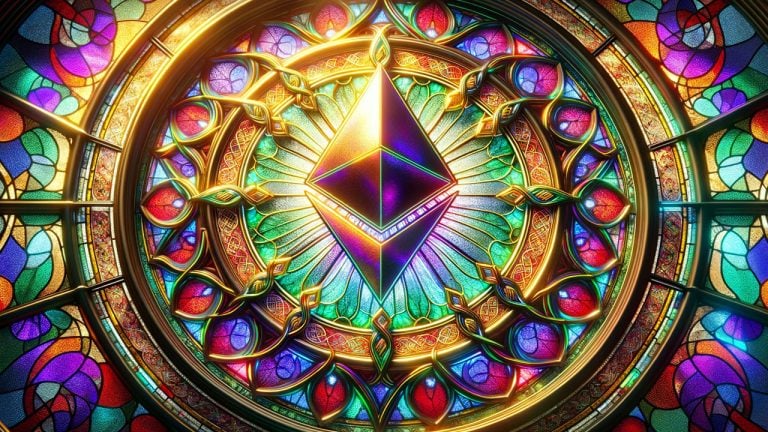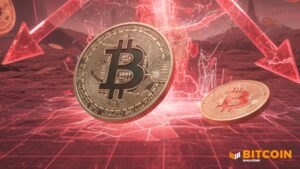
Introduction
Ethereum, currently valued at $2,265, is experiencing fluctuations within a daily range of $2,170 to $2,310. With a market capitalization of $272 billion and a 24-hour trading volume of $19.24 billion, Ethereum's volatility mirrors that of bitcoin. The anticipation surrounding the potential approval of a spot bitcoin exchange-traded fund (ETF) is contributing to this volatility.
Market Analysis
Ethereum's market oscillators are providing mixed signals, with a majority indicating a neutral market sentiment. Moving averages (MAs) lean towards a bearish tone, although there is a glimmer of bullish hope in the longer term. Oscillators like the relative strength index (RSI) and Stochastic are lingering in neutral territory, indicating a balanced or indecisive market.
The commodity channel index (CCI) dipping into the negative and the moving average convergence divergence (MACD) signaling a sell contrast with a bullish hint from the momentum indicator. These mixed signals suggest that Ethereum's market is at a crossroads, awaiting a clear trend or trigger.
The short-term moving averages, particularly the 10 and 20-day averages, show a bearish trend due to recent price drops. However, the longer-term averages, from 30-day onward, indicate bullish dominance. This divergence suggests short-term bearishness with the potential for medium to long-term recovery or growth.
Price Analysis
Examining Ethereum's daily chart reveals a volatile narrative with significant price swings. A recent large drop followed by a modest recovery indicates a market grappling with direction. This presents strategic entry and exit points for observant traders.
Zooming into the 4-hour chart provides a more nuanced view of price movement, with recent bullish rises suggesting a potential trend reversal. Smaller ups and downs indicate reduced volatility and a consensus among traders at these levels. This marks critical entry and exit junctures for short-term plays.
On Ethereum's 1-hour chart, a defined uptrend is visible, characterized by a bullish upswing and increasing volume. This is a positive sign for continued upward momentum. ETH traders are advised to look for entry opportunities at pullbacks to support levels to ensure the pattern of higher highs continues.
Bullish Perspective
Despite short-term turbulence and neutral oscillator signals, Ethereum's resilience in the face of market volatility is notable. The optimistic longer-term moving averages and the budding uptrend on the 1-hour chart suggest a potential upward trajectory. Traders may see this as an opportunity to capitalize on dips, while keeping an eye out for emerging bullish patterns that signal strengthening momentum for Ethereum.
Bearish Perspective
An analysis of Ethereum's price reveals a challenging landscape. Immediate bearish signals from short-term moving averages and a significant sell-off indicated in the daily chart are concerning. The predominance of neutral oscillator readings suggests a lack of strong buying momentum, potentially leading to further price consolidation or decline. Traders should exercise caution and consider the possibility of continued bearish trends, preparing for potential downside risks as the market seeks a new equilibrium.
Register your email here to receive weekly price analysis updates directly to your inbox.
What are your thoughts on Ethereum's market action on Monday morning? Share your opinions in the comments section below.
Frequently Asked Questions
What precious metals could you invest in to retire?
Silver and gold are two of the most valuable precious metals. They are both easy to trade and have been around for years. If you want to diversify your portfolio, you should consider adding them to your list.
Gold: Gold is one the oldest forms currency known to man. It's stable and safe. Because of this, it is considered a great way of preserving wealth during times when there are uncertainties.
Silver: Silver has always been popular among investors. It's an ideal choice for those who prefer to avoid volatility. Silver, unlike gold, tends not to go down but up.
Platinium is another precious metal that is becoming increasingly popular. It is very durable and resistant against corrosion, much like silver and gold. It's however much more costly than any of its counterparts.
Rhodium: Rhodium can be used in catalytic convertors. It is also used in jewelry-making. It's also relatively inexpensive compared to other precious metals.
Palladium: Palladium has a similarity to platinum but is more rare. It's also more accessible. It is a preferred choice among investors who are looking to add precious materials to their portfolios.
How much should precious metals be included in your portfolio?
To answer this question we need to first define precious metals. Precious metals refer to elements with a very high value relative other commodities. This makes them highly valuable for both investment and trading. The most traded precious metal is gold.
There are however many other types, including silver, and platinum. While gold's price fluctuates during economic turmoil, it tends to remain relatively stable. It is also not affected by inflation and depression.
The general trend is for precious metals to increase in price with the overall market. That said, they do not always move in lockstep with each other. For example, when the economy is doing poorly, the price of gold typically rises while the prices of other precious metals tend to fall. This is because investors expect lower rates of interest, which makes bonds less attractive investments.
When the economy is healthy, however, the opposite effect occurs. Investors want safe assets such Treasury Bonds and are less inclined to demand precious metals. Because they are rare, they become more pricey and lose value.
You must therefore diversify your investments in precious metals to reap the maximum profits. Because precious metals prices are subject to fluctuations, it is best to invest across multiple precious metal types, rather than focusing on one.
How do you withdraw from an IRA that holds precious metals?
First decide if your IRA account allows you to withdraw funds. Then make sure you have enough cash to cover any fees or penalties that may come with withdrawing funds from your retirement plan.
You should open a taxable brokerage account if you're willing to pay a penalty if you withdraw early. If you decide to go with this option, you will need to take into account the taxes due on the amount you withdraw.
Next, figure out how much money will be taken out of your IRA. This calculation depends on several factors, including the age when you withdraw the money, how long you've owned the account, and whether you intend to continue contributing to your retirement plan.
Once you have determined the percentage of your total savings that you would like to convert to cash, you can then decide which type of IRA to use. Traditional IRAs allow you to withdraw funds tax-free when you turn 59 1/2 while Roth IRAs charge income taxes upfront but let you access those earnings later without paying additional taxes.
Once you have completed these calculations, you need to open your brokerage account. To encourage customers to open accounts, brokers often offer signup bonuses and promotions. To avoid unnecessary fees, however, try opening an account using a debit card rather than a credit card.
When it comes time to withdraw your precious metal IRA funds, you will need a safe location where you can keep your coins. Some storage facilities will accept bullion bars, others require you to buy individual coins. Before choosing one, consider the pros and disadvantages of each.
Bullion bars, for example, require less space as you're not dealing with individual coins. But, each coin must be counted separately. However, keeping individual coins in a separate place allows you to easily track their values.
Some people prefer to keep coins safe in a vault. Others prefer to store their coins in a vault. No matter what method you use, it is important to keep your bullion safe so that you can reap its benefits for many more years.
How much is gold taxed under a Roth IRA
The tax on an investment account is based on its current value, not what you originally paid. All gains, even if you have invested $1,000 in a mutual funds stock, are subject to tax.
You don't pay tax if you have the money in a traditional IRA/401k. Taxes are only charged on capital gains or dividends earned, which only apply to investments longer than one calendar year.
These rules vary from one state to another. Maryland is an example of this. You must withdraw your funds within 60 calendar days of turning 59 1/2. Massachusetts allows you to delay withdrawals until April 1. New York offers a waiting period of up to 70 1/2 years. To avoid any penalties, plan your retirement savings and take your distributions as early as possible.
Who has the gold in a IRA gold?
The IRS considers gold owned by an individual to be “a type of money” and is subject taxation.
To be eligible for the tax-free status, you must possess at least $10,000 gold and have had it stored for at least five consecutive years.
The purchase of gold can protect you from inflation and price volatility. But it's not smart to hold it if your only intention is to use it.
If you plan on selling the gold someday, you'll need to report its value, which could affect how much capital gains taxes you owe when you cash in your investments.
A financial planner or accountant should be consulted to discuss your options.
How much tax is gold subject to in an IRA
The tax on the sale of gold is based on its fair market value when sold. When you purchase gold, you don't have to pay any taxes. It is not income. If you sell it later you will have a taxable profit if the price goes down.
You can use gold as collateral to secure loans. When you borrow against your assets, lenders try to find the highest return possible. In the case of gold, this usually means selling it. The lender might not do this. They might keep it. They might decide that they want to resell it. In either case, you risk losing potential profits.
To avoid losing money, only lend against gold if you intend to use it for collateral. Otherwise, it's better to leave it alone.
Statistics
- This is a 15% margin that has shown no stable direction of growth but fluctuates seemingly at random. (smartasset.com)
- If you accidentally make an improper transaction, the IRS will disallow it and count it as a withdrawal, so you would owe income tax on the item's value and, if you are younger than 59 ½, an additional 10% early withdrawal penalty. (forbes.com)
- You can only purchase gold bars at least 99.5% purity. (forbes.com)
- If you take distributions before hitting 59.5, you'll owe a 10% penalty on the amount withdrawn. (lendedu.com)
- The price of gold jumped 131 percent from late 2007 to September 2011, when it hit a high of $1,921 an ounce, according to the World Gold Council. (aarp.org)
External Links
investopedia.com
finance.yahoo.com
bbb.org
wsj.com
- Saddam Hussein's Invasion Helped Uncage a Bear In 1990 – WSJ
- You want to keep gold in your IRA at home? It's Not Exactly Legal – WSJ
How To
The History of Gold as an Asset
From the very beginning of time, gold was a currency. It was widely accepted around the world and enjoyed its purity, divisibility and uniformity. Because of its intrinsic value, it was also widely traded. However, since there were no international standards for measuring gold at this point, different weights and measures existed worldwide. One pound sterling in England was equivalent to 24 carats silver, while one livre tournois in France was equal 25 carats. In Germany, one mark was equivalent to 28 carats.
In the 1860s the United States began issuing American currency made up 90% copper (10% zinc) and 0.942 gold (0.942 pure). This led to a decline in demand for foreign currencies, which caused their price to increase. The United States began minting large quantities gold coins at this time, which led to a drop in the price. Because the U.S. government had too much money coming into circulation, they needed to find a way to pay off some debt. They sold some of their excess gold to Europe to pay off the debt.
Since most European countries were not confident in the U.S. dollar they began accepting gold as payment. Many European countries began to use paper money and stopped accepting gold as payment after World War I. The price of gold rose significantly over the years. Even though the price of gold fluctuates, it remains one the best investments you can make.
—————————————————————————————————————————————————————————————–
By: Jamie Redman
Title: Ethereum Technical Analysis: Ether's Volatility Reflects Bitcoin's Amid ETF Anticipation
Sourced From: news.bitcoin.com/ethereum-technical-analysis-ether-echoes-bitcoins-volatility-amid-growing-etf-anticipation/
Published Date: Mon, 08 Jan 2024 14:23:04 +0000
Related posts:
 Bitcoin Technical Analysis: BTC Price Reflects Market Equilibrium and Consolidation
Bitcoin Technical Analysis: BTC Price Reflects Market Equilibrium and Consolidation
 Ethereum Technical Analysis: ETH Bulls Continue to Break Upper Resistance Levels
Ethereum Technical Analysis: ETH Bulls Continue to Break Upper Resistance Levels
 Ethereum Technical Analysis: ETH Faces Downward Pressure; Bearish Trends Emerge Amidst Market Volatility
Ethereum Technical Analysis: ETH Faces Downward Pressure; Bearish Trends Emerge Amidst Market Volatility
 XRP Technical Analysis: Navigating Volatility Amidst Blackrock Rumors
XRP Technical Analysis: Navigating Volatility Amidst Blackrock Rumors












